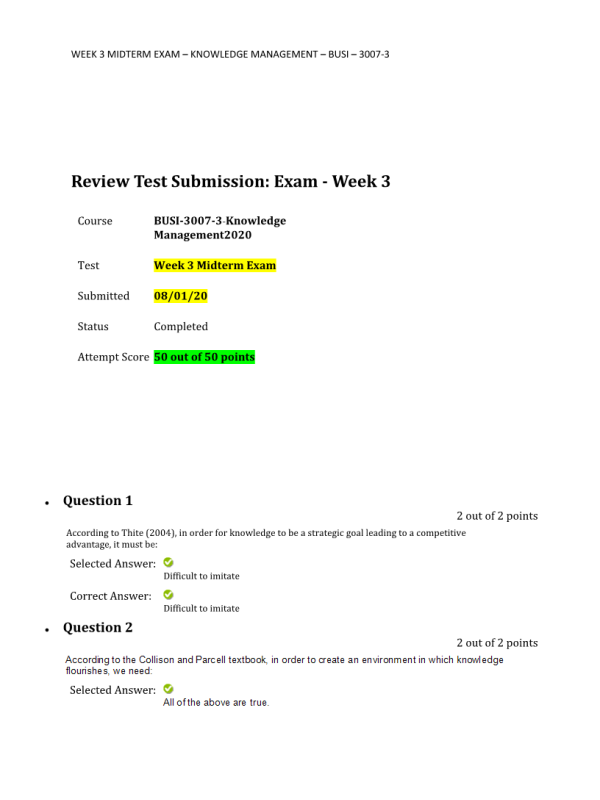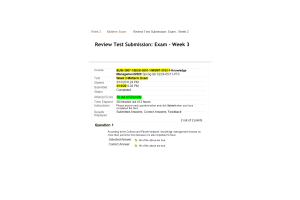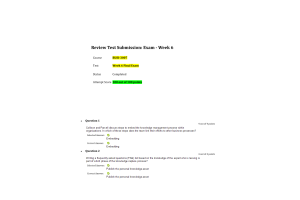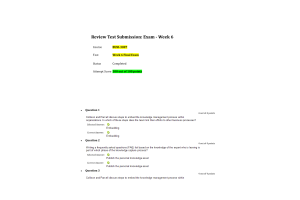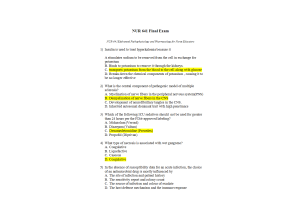BUSI 3007-3Week 3 Midterm50 out of 50 Points
Course : BUSI 3007 Knowledge Management
Contributed : Laura Davis
- $39.00
BUSI 3007 Knowledge Management
- Question: According to Thite (2004), in order for knowledge to be a strategic goal leading to a competitive advantage, it must be:
- Question: According to the Collison and Parcell textbook, in order to create an environment in which knowledge flourishes, we need:
- Question: According to the Collison and Parcell textbook, Knowledge Management is about all of the following processes except:
- Question: Knowledge validation refers to:
- Question: According to Collison and Parcell, the starting point for using the holistic model:
- Question: Organizational knowledge is embodied in:
- Question: According to Collison and Parcell, "captured knowledge" requires ____________________.
- Question: The three fundamental knowledge processes are:
- Question: The four pillars that support KM initiatives are:
- Question: Who creates valuable organizational knowledge?
- Question: According to economists (Knapp, 1988), ___________ is becoming the most important product in the United States.
- Question: Information Technology (IT)-centric KM focuses on:
- Question: According to Thite (2004), a main reason why KM has focused more on technology than on HR is because:
- Question: According to Herzberg's Two Factor Theory of Motivation (Hendriks, 1999), hygiene factors are unlikely to contribute to:
- Question: According to Thite (2004), learning in an organization is mostly:
- Question: How is second-generation KM different from first-generation KM?
- Question: People share knowledge because:
- Question: According to Knapp (1998), the best reason for companies to embrace knowledge management is:
- Question: In second-generation KM, Knowledge Life Cycles are seen as:
- Question: According to the Collison and Parcell textbook, knowledge management focuses on more than just know how because it is also important to have:
- Question: According to Hendriks (1999), before knowledge sharing can take place, the knowledge owner must ________________ their knowledge.
- Question: Knowledge integration is:
- Question: Second-generation KM focuses on:
- Question: According to the Collison and Parcell textbook, the process of creating knowledge begins with _____________.
- Question: According to Hendriks (1999), a common motivation to introducing technology into the workplace is that it may _________ the individual knowledge worker.
